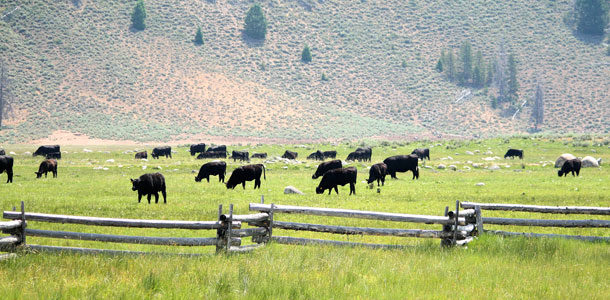They provide higher quality feed, are more productive and are cheaper to grow when they have good forage legumes growing in them.
Yes – nitrogen fertilizer prices have come down. But they still are so high it’s going to be difficult to justify fertilizing pastures next spring. So instead, how about growing your own nitrogen using legumes?
It isn’t easy to add legumes to a grass sod. One of the major barriers is existing weeds.
Weeds are a special problem in grass-legume mixtures because most herbicides that can be used in pastures to control weeds also will harm or kill most legumes. One of the keys, then, to successful grass-legume pastures is beginning with a pasture that does not have weed problems. This fall, use the remainder of the growing season to control any troublesome weeds in your pasture before you attempt to add legumes next spring.
The biggest challenge to establishing legumes into an existing grass sod is competition by the existing grass on new, slow-growing legume seedlings. Anything you do to reduce competition and slow down grass growth will help.
With that in mind, from now until that grass will grow no more this year, graze the living daylights out of that grass. Grub it down, then graze it some more.
Now why would you want you to do that? Surely it will hurt the grass. Well, surprise – that's exactly what you want. Overgrazing this fall prior to this winter’s or next spring’s sod seeding will weaken the grass and slow its spring growth, thus giving new legume seedlings like red and white clover, alfalfa and birdsfoot trefoil a better chance to get started.
And while you’re at it, also collect some soil samples. Then analyze them and apply any needed fertilizer. Legumes especially need good phosphorus and a neutral soil pH. Getting lime applied this fall, if needed, will allow it time to neutralize some of your soil’s acidity.
So, plan to add some legumes to your pasture next spring. Control weeds, apply needed fertilizer and graze your grass this fall until virtually nothing is left. Then, keep grazing a couple weeks more just to make sure.
Legumes you add next spring will establish better because of it. FG
Bruce Anderson, Ph.D., is an agronomy and forage specialist for the University of Nebraska – Lincoln.
PHOTO
Cattle graze in a late summer pasture near Stanley, Idaho. Photo by Jenna Hurty.










